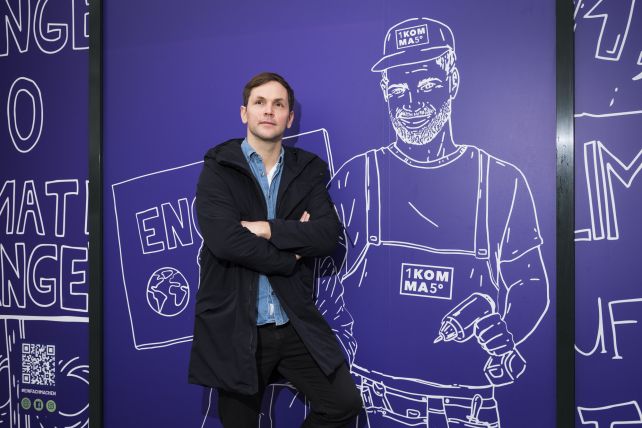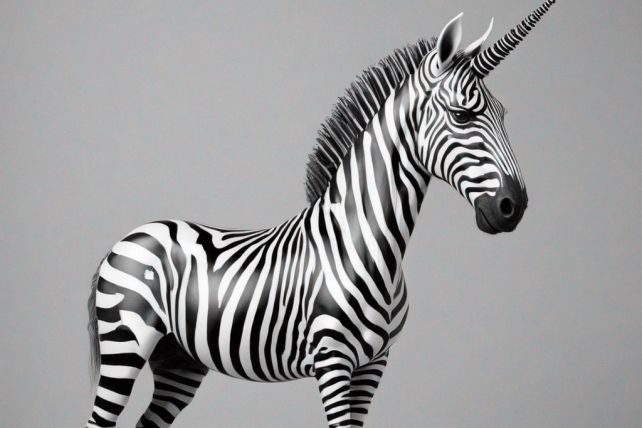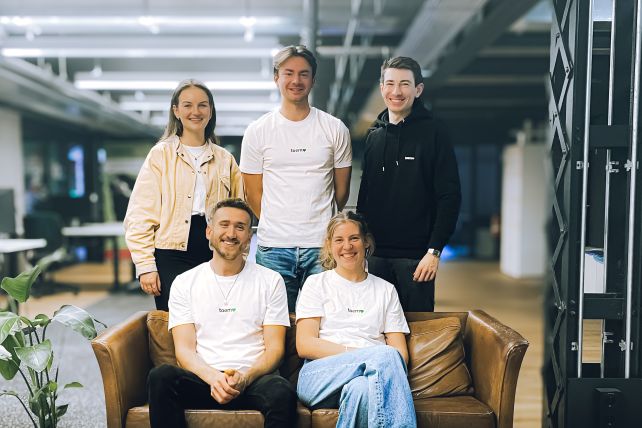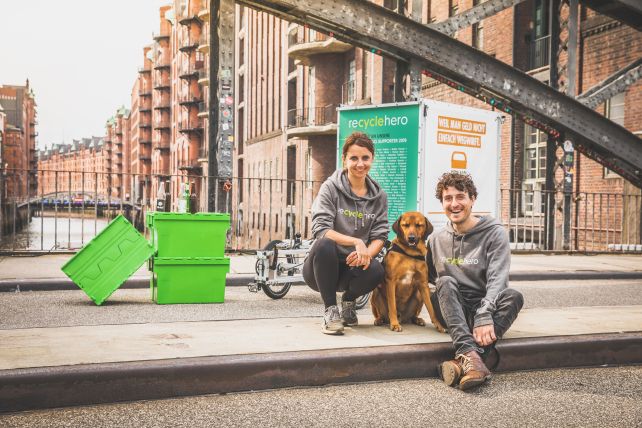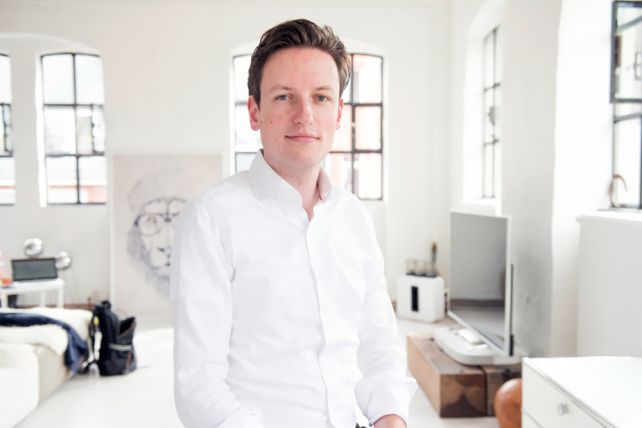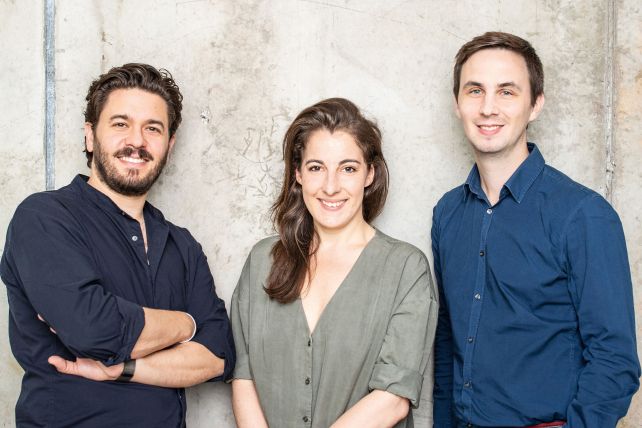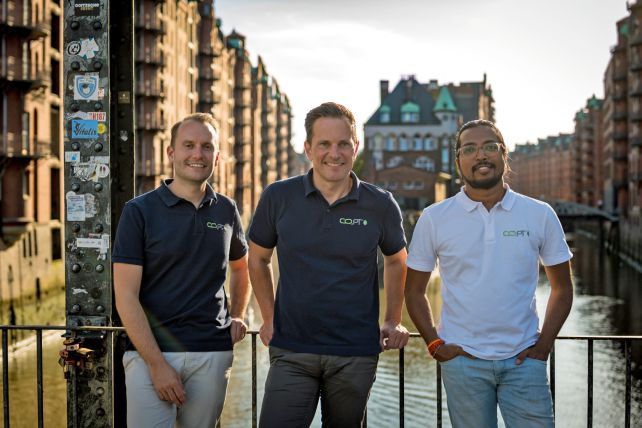Bracenet makes colourful jewellery from old fishing nets
Plastic jewellery doesn't have to be a sin. Bracelets and key rings made from old fishing nets can even be used to protect dolphins and rid the oceans of dangerous plastic waste. The Hamburg-based startup Bracenet collects drifting fishing nets with its partner organisations and upcycles them into lanyards, dog leashes or eyeglass chains.
There are now huge mountains of plastic that have been fished out of the oceans and have found a pretty use. Bracenet has already given new life to around 190,000 metres of net - the equivalent of a total of 8,000 sperm whales. Managing Director Maja Löwedey is adding: "We have already sold over a million products."

A holiday experience was the beginning of Bracenet
Co-founder Madeleine von Hohenthal won the "Commerce" category at STARTERiN Hamburg in 2021 with her startup, after Bracenet had won the German Sustainability Award Next Economy Award a year earlier and the Green Product Award in 2019.
The founding couple von Hohenthal and Benjamin Wenke came up with the idea of nylon straps made from fishing nets back in 2015 while on holiday in Tanzania and Zanzibar. "We were often on the beach there, snorkelling and diving a lot, and we saw these fishing nets everywhere," recalls Wenke. "Some of them had turtles caught in them." The two wanted to do something about it. "We sat on the beach, pondered and at some point put a piece of net over our wrist. It was immediately clear that we would make bracelets out of it," says the 39-year-old founder. They spent the rest of their holiday collecting as many fishing nets as possible and taking them back to Hamburg in their rucksacks.
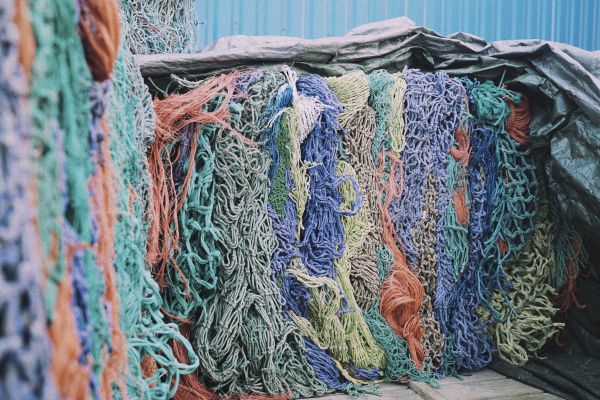
From hobby to successful startup
At first it was a hobby. The founding couple initially worked in their old jobs, von Hohenthal as Head of Art Buying at the BBDO agency and Wenke as Head of Marketing at Bosch. After work, they knotted bracelets and necklaces in their shared flat. There were still questions to be answered, for example: Which adhesive is best? Which fasteners should you choose? That took a lot of time and effort.
Bracenet really took off with a major order from Deutsche Telekom in 2017, followed by several airlines that sold Bracenet jewellery in their in-flight shops. Bracenet became increasingly well-known and successful. The startup has always financed itself through bootstrapping. External investors are not on board. Bracenet even uses its proceeds to support several NGOs that are active in environmental protection. Since 2015, Bracenet has already donated over 250,000 euros, primarily to the marine conservation groups Healthy Seas and Ghost Diving. The divers from these two organisations are the ones who are out in the world's oceans today collecting ghost nets floating in the water. After recovery, the nets are shipped to the Norwegian company Nofir, where they are washed and selected. Bracenet prefers nets that are in as good a condition as possible and in bright colours.

Ghost nets are deadly traps for marine animals
On the wrists of customers, they are chic pieces of jewellery. In the sea, however, the colourful nets become deadly traps for fish and other marine animals. Once entangled, there is hardly any escape. Wenke sees two main reasons why so many fishing nets end up in the sea. "If the nets are so damaged that they can no longer be mended, they are simply disposed of overboard, which is the easiest way. Or, as is increasingly the case, because fish stocks are retreating due to overfishing and hiding on wrecks or reefs, the fishermen follow them," explains the founder. "And the risk of getting stuck with the net is naturally much greater. For safety reasons, the net then has to be cut, otherwise the ship could capsize. Of course, hardly anyone will report it."
Ghost nets remain in the sea for a long time because the plastic they are made of does not simply dissolve. According to WWF estimates, they only decompose after 400 to 600 years. Very slowly, they are ground into smaller and smaller pieces. As so-called microplastics, they pollute the underwater world. Fish mistake the tiny plastic particles for food and eat them. And at the end of the food chain, the harmful waste ends up on people's plates.
According to estimates by the Federal Ministry for the Environment, at least 25,000 fishing nets or parts of them end up in the sea annually. A study by the Dutch University of Utrecht comes to the conclusion that around 500,000 tonnes of plastic waste end up in the oceans every year. Almost half of this comes from fishing. In the end, fishery itself suffers from the damage caused by their ghost nets because they jeopardise fish stocks.

The heart of Bracenet beats in Hamburg
A fishing business in Bantry Bay, Ireland, has realised this and delivers used fishing nets to Hamburg for upcycling. Near the Binnenalster lake, Bracenet's 35 employees use them to make turquoise-green bracelets with orange stripes for 25 euros each. Dog leads are available for 69 euros. The Hamburg location has its price, but Bracenet does not use low-wage production from the Far East. "We were lucky to be able to rent a small studio in the old Kunsthaus in the back courtyard on Jungfernstieg. Our products are made by hand here, close to the water," says Managing Director Löwedey. "Since last year, we have been supported by another production facility in Porto, Portugal. This was a particularly good idea, as our partner organisations are also active there, as there is of course a lot of fishing."
However, production is not only carried out in Hamburg, but also conceptualised, planned, packaged and sold. Bracenet's website lists 15 retailers in Hamburg who offer the colourful accessories in their shops. Bracenet sells its products in 135 shops worldwide and via its online shop. The product range there is becoming ever broader and more colourful. There are now shopping bags made from fishing nets salvaged from the Baltic Sea, hats, sweatshirts and hoodies with Bracenet prints. And for very young customers, Bracenet has published its own read-aloud book to match the theme: “Luana, the sweet bag and the sea.”
The lively environment in the city of Hamburg and the colourful startup ecosystem with its many ideas and innovations, provide the Bracenet team with a fertile resource for constantly new products.



